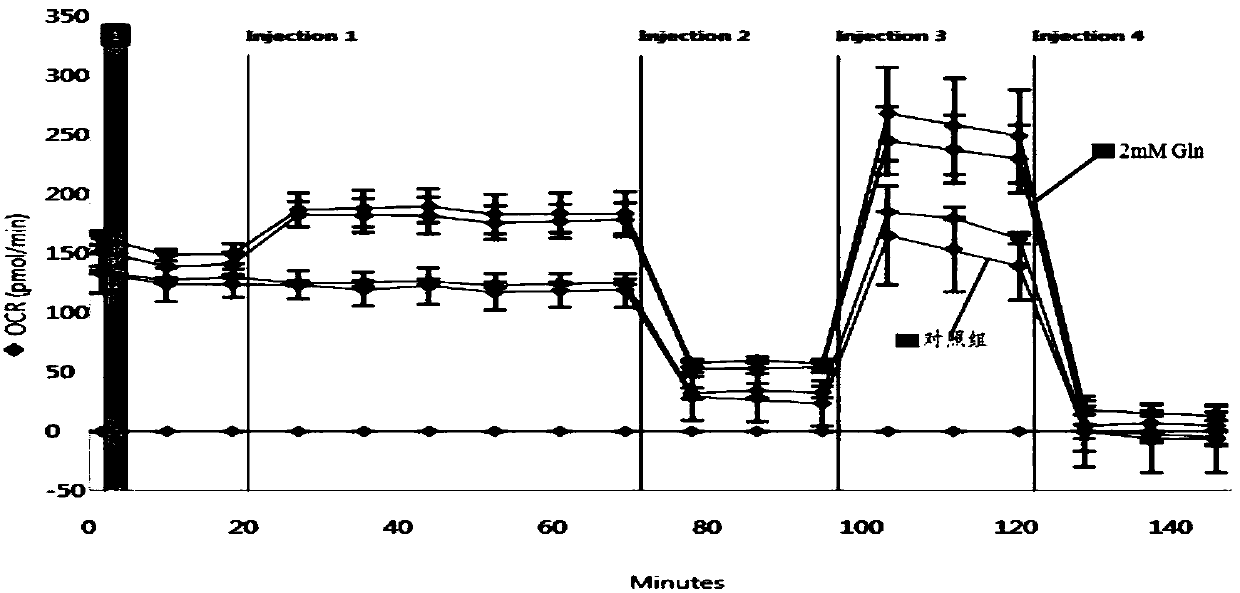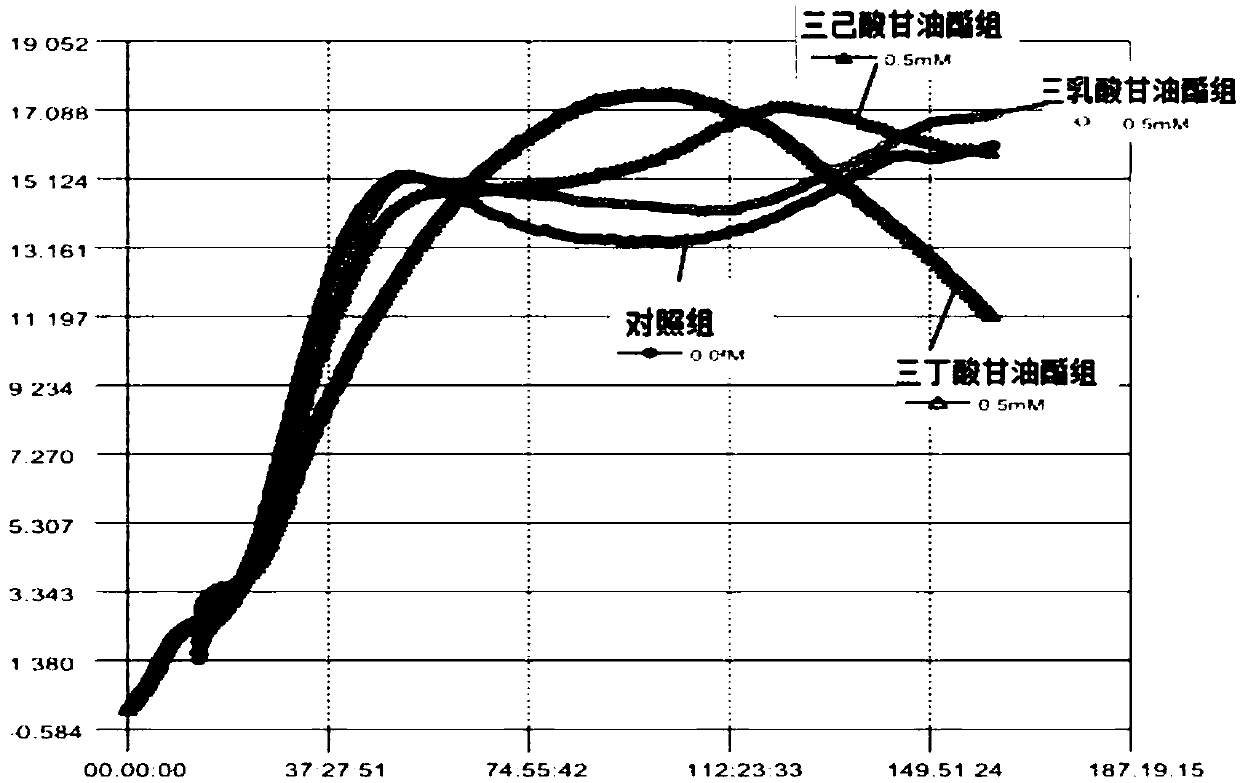Method for screening functional feed additives for piglets
A technology of feed additives and screening methods, which is applied in the direction of biochemical equipment and methods, analytical materials, and microbial determination/inspection, etc., can solve the problems of inaccurate evaluation of the effect of candidate nutrients, lack of screening methods, lack of real-time monitoring, etc., to achieve Improving the mitochondrial respiratory function of intestinal cells, with high accuracy and fast speed
- Summary
- Abstract
- Description
- Claims
- Application Information
AI Technical Summary
Problems solved by technology
Method used
Image
Examples
Embodiment 1
[0102] Example 1 Real-time monitoring of the growth of porcine small intestinal cells IPEC-1
[0103] In this example, all liquids were sterilized through a 0.2 μM filter.
[0104] (1) The porcine intestinal cells IPEC-1 were cultured in vitro.
[0105] (2) Preliminary preparation: the 75cm 2 IPEC-1 cells with a growth abundance of 80% in the culture flask were washed twice with 10ml PBS (phosphate buffered solution), i.e., phosphate buffered saline, and then digested by adding 200μl Trypsin (Parenzyme) for 5 minutes. Observe the cell state, digest until the cells are dispersed, and then stop the digestion with 10ml DMEM / F12 medium containing 10% fetal bovine serum;
[0106] Transfer the DMEM / F12 medium loaded with porcine small intestinal cells IPEC-1 to a 15ml centrifuge tube, and centrifuge at room temperature at 1000 rpm for 5 minutes.
[0107] The supernatant in the DMEM / F12 medium loaded with porcine small intestinal cells IPEC-1 after centrifugation was sucked off, a...
Embodiment 2
[0117] Example 2 Determination of the mitochondrial respiratory function of pig small intestinal cells IPEC-1
[0118] (1) The porcine intestinal cells IPEC-1 were cultured in vitro.
[0119] (2) Preliminary preparation: the 75cm 2 IPEC-1 cells with a growth abundance of 80%-90% in the culture flask were washed twice with 10ml PBS (phosphate buffered solution), i.e. phosphate buffered saline, and then digested by adding 200 μl of trypsin (Parenzyme) for 5 minutes. Use a microscope to observe the cell state, digest until the cells are dispersed, and then stop the digestion with 10ml DMEM / F12 medium containing 10% fetal bovine serum;
[0120] Transfer the DMEM / F12 medium loaded with porcine small intestinal cells IPEC-1 to a 15ml centrifuge tube, and centrifuge at room temperature at 1000 rpm for 5 minutes.
[0121] The supernatant in the DMEM / F12 medium loaded with porcine small intestinal cells IPEC-1 after centrifugation was sucked off, and the DMEM / F12 medium that added 1 ...
example 1
[0136] Examples 1 and 2 take glutamine (Gln) as an example as a candidate nutrient for functional feed additives for specific analysis.
[0137] Such as figure 1 Shown, be divided into three groups 0mM Gln group (control group), 0.5mM Gln group (treatment group), 2mM Gln group (treatment group), by figure 1 It can be seen that after adding different concentrations of Gln, the vitality and quantity of pig small intestinal cells IPEC-1 were significantly improved, especially the effect of promoting cell growth and enhancing cell viability in the 2mM Gln group was better than that in the 0.5mM Gln group;
[0138] Such as figure 2 As shown, divided into 2 groups of control group (0mM Gln group) and treatment group (2mM Gln group), from figure 2 It can be seen from the figure that after adding 2mM Gln to the test solution, the respiratory oxygen consumption rate OCR of the pig small intestine cell line IPEC-1 is rapidly increased (<8min). The results of the calculation of the m...
PUM
 Login to View More
Login to View More Abstract
Description
Claims
Application Information
 Login to View More
Login to View More - R&D
- Intellectual Property
- Life Sciences
- Materials
- Tech Scout
- Unparalleled Data Quality
- Higher Quality Content
- 60% Fewer Hallucinations
Browse by: Latest US Patents, China's latest patents, Technical Efficacy Thesaurus, Application Domain, Technology Topic, Popular Technical Reports.
© 2025 PatSnap. All rights reserved.Legal|Privacy policy|Modern Slavery Act Transparency Statement|Sitemap|About US| Contact US: help@patsnap.com



